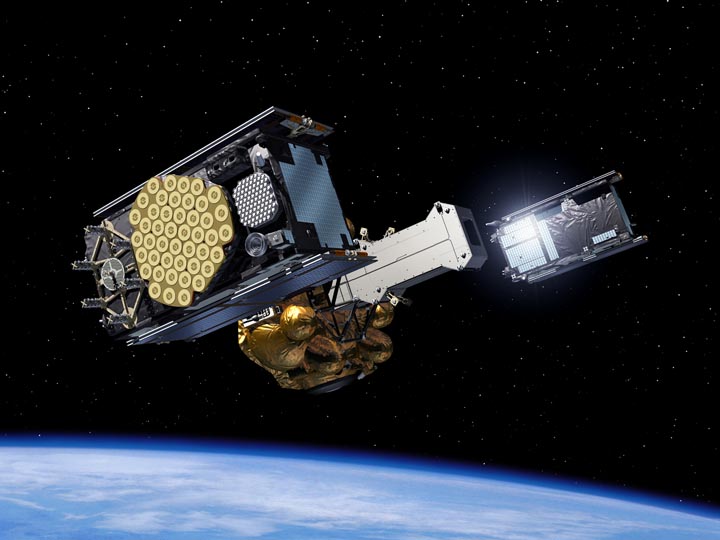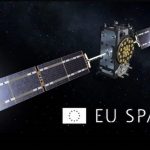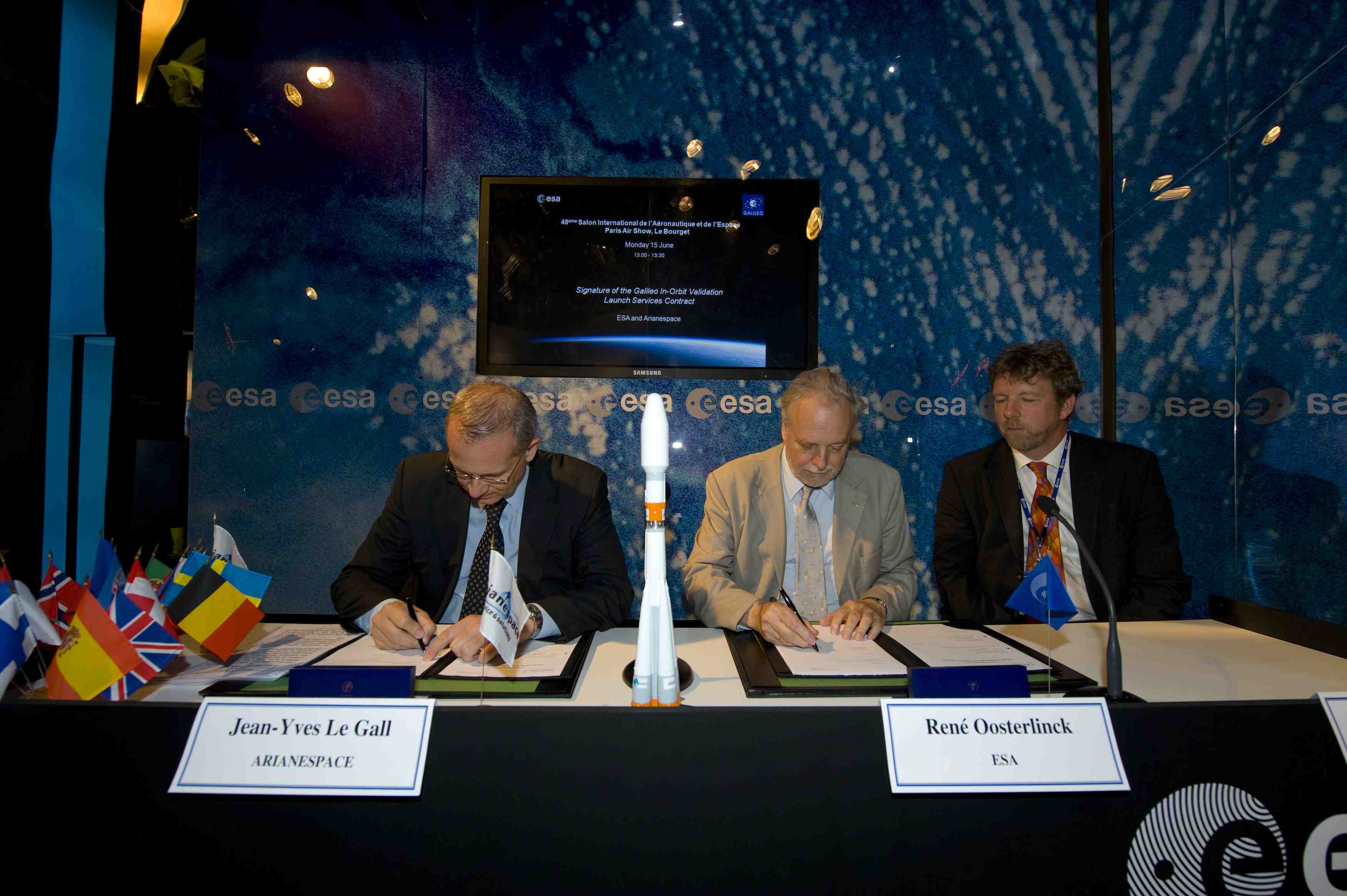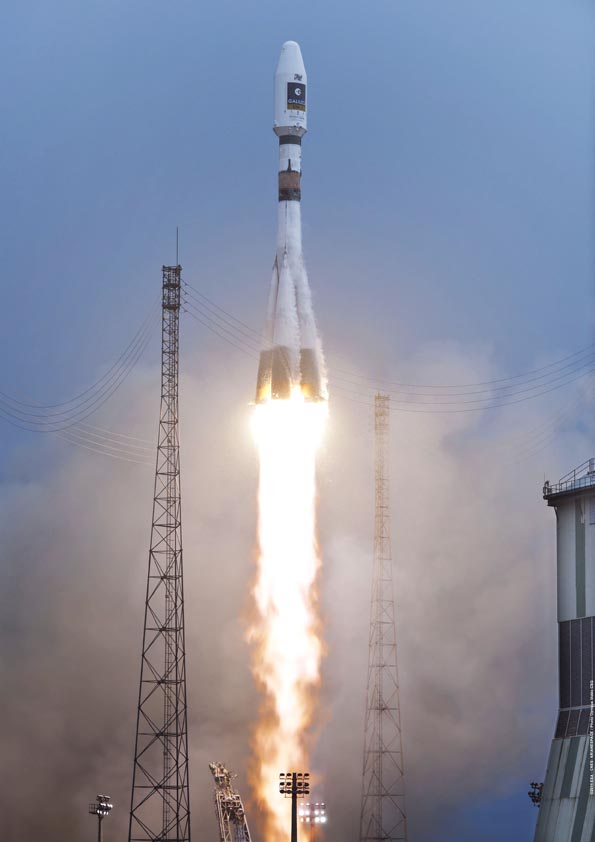[Updated November 8, 2011] Europe’s first two Galileo satellites have reached their final operating orbits, opening the way for activating and testing their navigation payloads.
[Updated November 8, 2011] Europe’s first two Galileo satellites have reached their final operating orbits, opening the way for activating and testing their navigation payloads.
Marking the formal end of their launch and early operations phase (LEOP), control of the satellites was passed yesterday (November 3, 2011) from the CNES French space agency center in Toulouse to the Galileo Control Center (GCC) in Oberpfaffenhofen, Germany. The GCC is now in charge for final (12) maneuvers needed to bring the satellites into their correct orbital location. Switch-on of the payload is presently planned for December 10.
The Oberfaffenhofen facility, operated by the German Aerospace Center DLR, will be in charge of the satellites’ command and control for the whole of their expected 12-year lives.
The two Galileo satellites were launched by Soyuz from French Guiana on October 21. Three hours and 49 minutes after launch, their Fregat-MT upper stage carried them into their planned 23, 222-kilometer orbit, where they were released simultaneously.
At this point, a joint team from CNES and the European Space Agency’s (ESA’s) European Space Operations Center moved into action, beginning the crucial task of bringing the two satellites to life. The first signals were heard almost simultaneously, according to ESA, confirming that the two spacecraft were in good health.
The next few days will see the navigation payload being switched on, marking the start of Galileo’s in-orbit test campaign, according to ESA. This rigorous check of the navigation signals is being conducted from ESA’s ground station in Redu, Belgium.
In particular, a 20-meter–diameter antenna will measure the precise shape of the navigation signals to a very high degree of accuracy. Once the navigation payload is fully checked-out and activated, a second Galileo Control Center in Fucino, Italy — operated by Telespazio — will oversee the system’s navigation services.
All the entities participating in these activities — ESOC, CNES, DLR and Telespazio — are doing so under contract to SpaceOpal, a joint subsidiary company of DLR and Telespazio.






